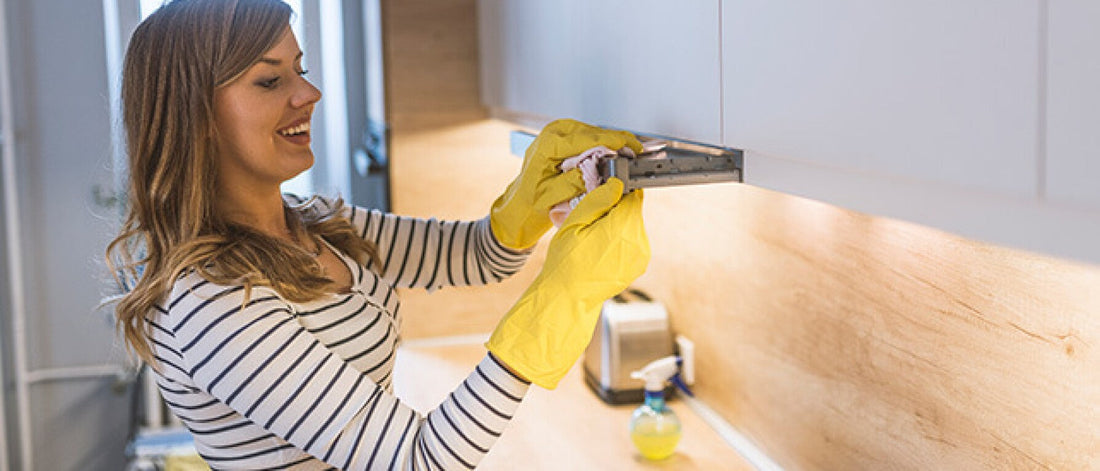Spring is traditionally a time of renewal. The air gets warmer, plants form new buds, animals return from their wintertime retreats, and many embrace the urge to thoroughly clean their homes.
Typically, spring cleaning includes a focus on the things you see daily—the cluttered drawers, dusty curtains, and smudged mirror. However, the most important area to be cleaned is perhaps the most overlooked—your indoor air.
As pollution and climate change become increasingly hot topics, indoor air quality has also become a serious concern. According to the Environmental Protection Agency (EPA), indoor air pollution is among the top five environmental health risks. Indoor air may be anywhere from two to five times as polluted as outdoor air—a huge problem, given that the typical individual spends as much as 90 percent of his or her time indoors.
Short-term effects include:
1. Particulate matter: Particulates include any particles floating around in the air. Dust, pollen, smoke, and animal dander all fall into this category. Particulate matter also includes tiny live organisms such as dust mites, mold, bacteria, and viruses.
2. Gaseous pollutants: Gas or chemical pollution (also known as Volatile Organic Compounds, or VOCs,) comes as a result of gas-producing combustion, fumes, or the outgassing of chemicals, such as formaldehyde. These gases may often be odorless. Sources include gas cooking stoves, candles, fireplaces, and many building materials. They also can be emitted from certain materials such as:
It may sound scary when you hear just how harmful these toxic, indoor air pollutants can be; however, there are three easy ways to help clean your indoor air.
When investing in a high-quality air purification system, there are three important factors to consider:
*Editor’s Note: The information in this article is intended for your educational use only; does not necessarily reflect the opinions of the Chopra Center's Mind-Body Medical Group; and is not a substitute for professional medical advice, diagnosis, or treatment. Always seek the advice of your physician or other qualified health providers with any questions you may have regarding a medical condition and before undertaking any diet, supplement, fitness, or other health program.
Indoor air can be 100 times more polluted than outdoor air. Reduce toxins in your home and keep your family safe with the Air Doctor—a professional air purifier. Save 50% for a limited time. Learn More.
Typically, spring cleaning includes a focus on the things you see daily—the cluttered drawers, dusty curtains, and smudged mirror. However, the most important area to be cleaned is perhaps the most overlooked—your indoor air.
As pollution and climate change become increasingly hot topics, indoor air quality has also become a serious concern. According to the Environmental Protection Agency (EPA), indoor air pollution is among the top five environmental health risks. Indoor air may be anywhere from two to five times as polluted as outdoor air—a huge problem, given that the typical individual spends as much as 90 percent of his or her time indoors.
Effects of Indoor Air Pollution
The harmful effects of indoor air pollution may occur immediately following exposure or years later.Short-term effects include:
- Irritation of eyes, nose, and throat
- Dizziness
- Fatigue
- Nausea
- Coughing or sneezing
- Shortness of breath
- Sinus congestion
- Respiratory diseases
- Heart disease
- Cancer
Two Types of Indoor Air Pollutants
Pollutants that jeopardize air quality in a home fall into two main categories:1. Particulate matter: Particulates include any particles floating around in the air. Dust, pollen, smoke, and animal dander all fall into this category. Particulate matter also includes tiny live organisms such as dust mites, mold, bacteria, and viruses.
2. Gaseous pollutants: Gas or chemical pollution (also known as Volatile Organic Compounds, or VOCs,) comes as a result of gas-producing combustion, fumes, or the outgassing of chemicals, such as formaldehyde. These gases may often be odorless. Sources include gas cooking stoves, candles, fireplaces, and many building materials. They also can be emitted from certain materials such as:
- Adhesives
- House paint, carpeting, furniture
- Cleaning products
- Pesticides
- Radon
It may sound scary when you hear just how harmful these toxic, indoor air pollutants can be; however, there are three easy ways to help clean your indoor air.
1. Remove the Dust
According to the EPA, many larger air particles settle to the ground as dust prior to air filtration. This necessitates some good, old-fashioned spring cleaning!- Dust countertops and surfaces regularly with a non-toxic cleaner.
- Follow your dusting with a thorough vacuuming. Go slowly to avoid stirring up dust in your wake.
- Empty your vacuum after each use. Go outdoors to avoid spilling the contaminated dust back into your indoor air.
2. Eliminate and Ventilate
The EPA recommends eliminating the source of pollutants—and ventilating with outdoor air—as the main ways to purify indoor air. This may or may not be possible, depending on where you live. Here are some additional suggestions:- Use green cleaning products or make your own!
- Avoid candles. Opt instead for pure essential oil diffusers or homemade essential oil misters (use water and a few drops of oil).
- Avoid wood-burning fireplaces and stoves.
- Open up! Try to open your windows for 10 to 15 minutes daily. (Avoid opening windows on days with a high pollen count or humidity. Also, avoid opening windows if you live near a freeway.)
- Use exhaust fans or open a window to control humidity while bathing.
- Use your exhaust fan while cooking.
- Arm your home with indoor house plants. Plants draw air pollutants in through their leaves as part of their normal respiration process. The pollutants are then deposited in their soil, where they are broken down by micro-organisms. A study done by NASA found that indoor plants are capable of removing toxic chemicals such as benzene, formaldehyde, and trichloroethylene from the air.
- Purchase a high-quality air purifier.
3. Purify the Air
Since there are many potential airborne contaminants that are difficult to find, a high-quality home air purifier is a great way to help circulate, clean, and purify the air in your home. This goes especially for urban households that are near areas of high pollution, where venting with outdoor air is not a wise option.When investing in a high-quality air purification system, there are three important factors to consider:
-
High-quality particle filter: All particle filters are not created equal. Look for a system that contains a high-efficiency (HEPA) filter or a high-efficiency or ultra-HEPA filter that can be up to 100 times more effective than an ordinary HEPA filter. These ultra-HEPA filters can be found in high-end air purifiers, such as the Air Doctor.
-
Activated carbon filtration system: Carbon filters should be at least 1/2ʺ thick in order to properly filter out potentially harmful gases from the air.
- High clean-air delivery rate (CADR) rating: When choosing an air purifier, compare the CADR rating. CADR tells you how much of a particular contaminant is removed from the air within a specific period of time, as well as how large a room it can clean in a specified amount of time. This creates an objective score that allows consumers to compare one air purifier against another. The higher the rating, the more air it can filter per minute. To have an impact, you should be looking at air purifiers with a CADR rating over 300.
*Editor’s Note: The information in this article is intended for your educational use only; does not necessarily reflect the opinions of the Chopra Center's Mind-Body Medical Group; and is not a substitute for professional medical advice, diagnosis, or treatment. Always seek the advice of your physician or other qualified health providers with any questions you may have regarding a medical condition and before undertaking any diet, supplement, fitness, or other health program.
Indoor air can be 100 times more polluted than outdoor air. Reduce toxins in your home and keep your family safe with the Air Doctor—a professional air purifier. Save 50% for a limited time. Learn More.






















